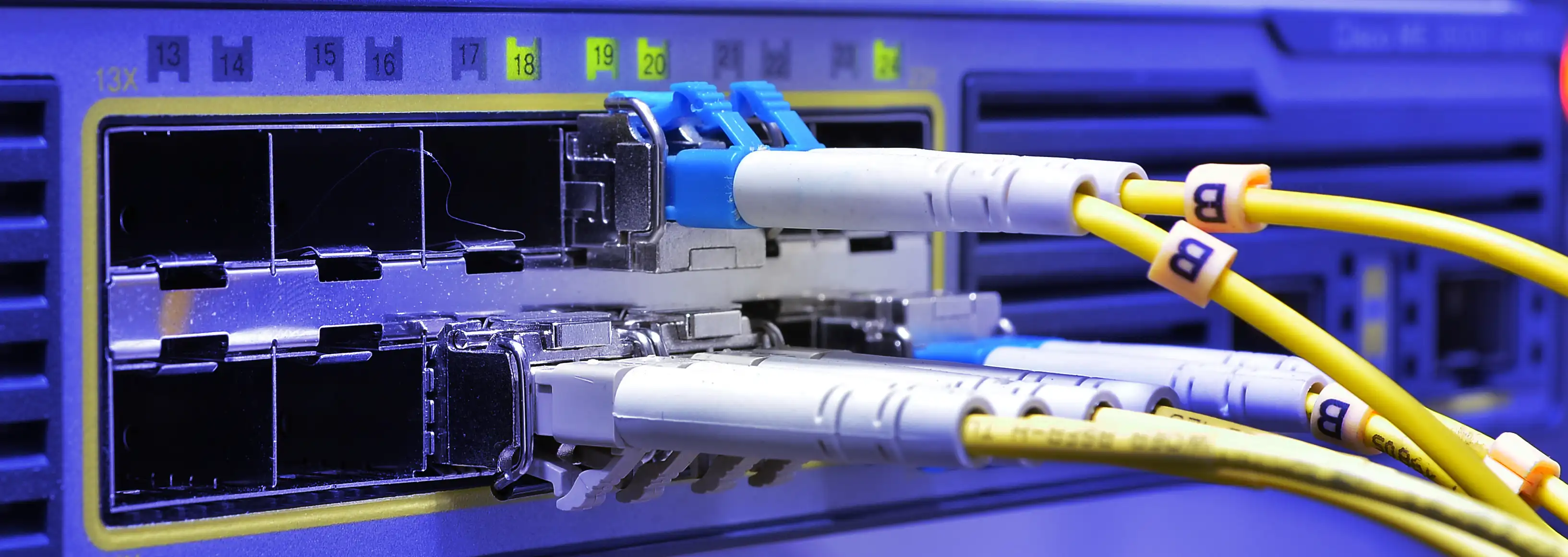Fiber Optic Cable Installation
MyTGroup is one of the leading companies providing fiber optic cabling installation, maintenance and design. Our project managers and technicians are experienced professionals, with on the job training and continuing education to ensure they are up to or beyond industry standard. We document all projects, and provide an interactive layout of all cabling prior installation.
Our engineers all carry certification testers, and the proper equipment to complete the work the first time. Get fiber done at the right price and connect that last mile!
What is Fiber Internet?
Having distance problems? Maybe fiber can help! We utilize fiber optic cable for many purposes at businesses. We have had multiple types of requests for installation of fiber optic cables. Some customers need to connect a camera far across a parking lot. Some want to connect two buildings together for a local area network, or to even share internet connection. We have an array of fiber options, to convert, connect and up-link anything you could need.See if fiber optic can solve some of your most complicated network problems today!
How Fiber Optics Work
The small glass fibers in fiber cable, transmit data using pulses of light. What makes it faster than copper is the ability to carry multiple signals at the same time. The average speed is 1Gbps and that can move huge amounts of data. The fibers are so small they are typically bundled into one larger cable called a fiber optic trunk. This way, there are multiple lines in one cable to provide muliple channels of communication.These fiber trunk cables are what you will find in most, if not all data centers across the world. This is what modern internet is made of, and you may see benefits even if you don't have fiber internet yourself. The routing stations that connect you to the web, use fiber optic trunks to make that connection.
Limitations of Fiber
Fiber optic cable is very fragile and must be handled with extreme care. Since they are made with thin glass fibers and not copper like its predecessor, it is more prone to damage. Fiber cables also have a limited bend radius which makes complications during installation. When a path has to many bends, it can cause signal outages or breakages.
POE is not supported by fiber optic cables, so IP devices like phones, access points and other devices can not connect directly without a converter with power.
RJ-45 connectors are typical for UTP cables, and are pretty straight forward. Fiber has many types of connectors, and this can be confusing when installing it.
The Two Common Types of Fiber Cable
Single Mode cable shines light directly down the fiber in a single strand of glass. The single mode connections have a higher bandwidth and can carry higher transmissions at a much further distance. Up to 50 times more! Single mode is a integral part of most modern networks. Since it is designed to transmit data over long distances it is perfect for multi building complexes, to connect their networks.
Multi-mode cables are larger in diameter and are best at medium distances. The light waves are distributed to multiple paths or modes, as they travel the cable core. Longer runs are not advised for multi mode because the multiple paths can cause distortion the receiving end. This causes mixed or partial data. Multi-mode are most often used in a local area network (LAN) because of this possible interference.




